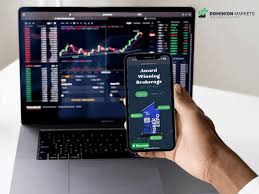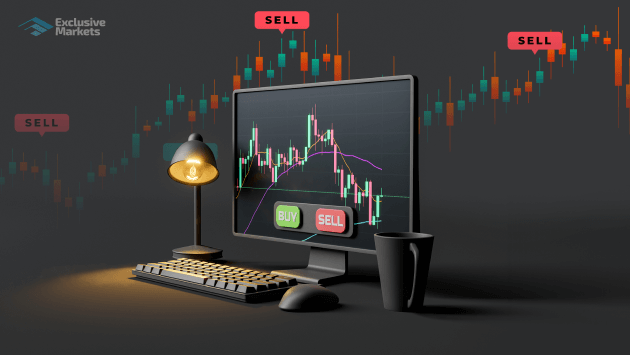
Welcome to the World of Forex Trading
In the fast-paced world of #forex trading, understanding the market and employing the right strategies is crucial for success. Whether you’re a seasoned trader or just starting out, numerous resources are available to help you navigate this exciting field. One such resource is forex trading site kuwait-tradingplatform.com, which offers insights and tools to enhance your trading experience.
What is Forex Trading?
Forex, or foreign exchange, trading is the process of buying and selling currencies with the intention of making a profit. It is the largest financial market in the world, with a daily trading volume exceeding $6 trillion. Forex trading is conducted over-the-counter and can take place 24 hours a day, five days a week, providing traders with ample opportunities to capitalize on market fluctuations.
Understanding the Forex Market
The forex market is decentralized and operates globally, which means that no single entity controls it. Instead, trading occurs in a network of banks, financial institutions, and individual traders through electronic networks. Major currency pairs such as EUR/USD, USD/JPY, and GBP/USD are the most traded, providing high liquidity and volatility.
Key Terminology in Forex Trading
Before diving into trading, it’s essential to familiarize yourself with some key terms:
- Currency Pair: The quotation of two different currencies, with one currency being quoted against the other.
- Pip: The smallest price move that a given exchange rate can make based on market convention.
- Leverage: The use of borrowed funds to increase the potential return on an investment.
- Spread: The difference between the buy and sell price of a currency pair.
How to Get Started with Forex Trading
Getting started in forex trading can be both exciting and overwhelming. Here are some steps to help you launch your trading journey:
1. Choose a Reliable Broker
Your broker acts as the intermediary in your trading operations. Ensure you select a broker that is regulated, trustworthy, and offers a platform that meets your trading needs. Look for features such as low spreads, fast execution speeds, and user-friendly interfaces.
2. Open a Trading Account
Once you’ve chosen a broker, you’ll need to open a trading account. Most brokers offer various account types, including demo accounts for practice and live accounts for real trading. Utilize a demo account to familiarize yourself with the trading platform and develop your strategies without risking real money.
3. Develop a Trading Plan
A solid trading plan is vital for success. This plan should outline your trading objectives, risk tolerance, strategies, and methods for analyzing market trends. Having a clear plan helps maintain discipline and minimize emotional decision-making.
4. Learn Technical and Fundamental Analysis
Successful forex traders often use both technical and fundamental analysis to inform their trading decisions. Technical analysis involves studying price charts and indicators to predict future movements, while fundamental analysis looks at economic indicators, news, and geopolitical events that can influence currency values.

Forex Trading Strategies
There are various trading strategies that traders can adopt based on their goals and risk tolerance. Here are some popular ones:
- Scalping: This strategy involves taking advantage of small price movements and making multiple trades over short time frames.
- Day Trading: Similar to scalping, day trading requires holding positions for a single day to capitalize on intraday price fluctuations.
- Swing Trading: This approach involves holding positions for several days or weeks to profit from prices that swing in a favorable direction.
- Position Trading: A long-term strategy where traders hold positions for months or even years, relying on fundamental analysis.
Risk Management in Forex Trading
Managing risk is a critical component of forex trading. Here are some strategies to protect your investments:
1. Use Stop-Loss Orders
Stop-loss orders are designed to limit losses by automatically closing a position at a predetermined price. Setting stop-loss levels ensures that your losses are manageable, even if the market moves against you.
2. Set Realistic Profit Targets
Establishing profit targets allows traders to exit positions at predetermined levels of profit. This practice promotes discipline and helps avoid emotions that can lead to holding onto losing trades.
3. Leverage Wisely
While leverage can enhance profits, it also increases risk. Use leverage cautiously and only take on what you can afford to lose. It’s essential to understand how leverage works and to set appropriate limits.
Choosing a Forex Trading Platform
The choice of trading platform can significantly impact your performance. Look for a platform that offers:
- Intuitive interface
- Advanced charting tools and indicators
- Robust security measures
- Access to educational resources and market news
- Mobile trading capabilities
Staying Informed: Market News and Analysis
Staying updated with current market news and trends is vital for successful trading. Utilize news feeds, economic calendars, and forex analysis from reputable sources to make informed decisions. Awareness of global events can impact currency movements and provide valuable trading opportunities.
Building a Community: Join Forex Trading Forums
Engaging with other traders through forums and communities can offer insights and support as you navigate your trading journey. Sharing experiences, strategies, and tips can enhance your learning and help you avoid common pitfalls.
Conclusion
Forex trading presents an unparalleled opportunity for profit, but it requires education, discipline, and a well-thought-out strategy. By understanding the market, leveraging effective trading strategies, and managing risk, you can navigate the forex landscape successfully. Whether you choose to trade on your own or utilize resources such as kuwait-tradingplatform.com, the key is to remain committed and continuously educate yourself in this ever-evolving market.
